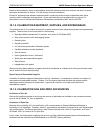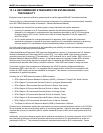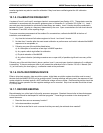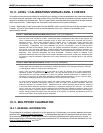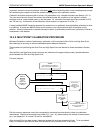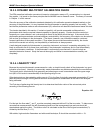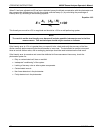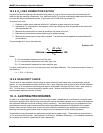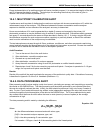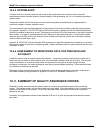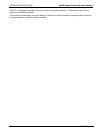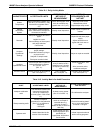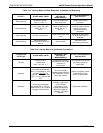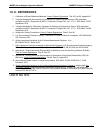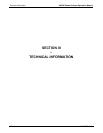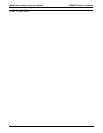
OPERATING INSTRUCTIONS M400E Ozone Analyzer Operator’s Manual
Proper implementation of an auditing program will serve a twofold purpose: (1) to ensure the integrity of the data
and (2) to assess the data for accuracy. The technique for estimating the accuracy of the data is given in
Section 2.0.8 of the QA Manual (Reference 11).
10.4.1. MULTIPOINT CALIBRATION AUDIT
A performance audit consists of challenging the continuous analyzer with known concentrations of O
3
within the
measurement range of the analyzer. The difference between the known concentration and the analyzer
response is obtained, and an estimate of the analyzer's accuracy is determined.
Known concentrations of O
3
must be generated by a stable O
3
source and assayed by the primary UV
photometric procedure or may be obtained using a certified O
3
transfer standard. Procedures used to generate
and assay O
3
concentrations are the same as those described in Section 10.1.3. If during a regular field audit,
the differences recorded for most analyzers are either negatively or positively biased, a check of the calibrator
used in routine calibrations of the analyzers may be advisable.
The test atmosphere must pass through all filters, scrubbers, conditioners, and other components used during
normal ambient sampling and through as much of the ambient air inlet system as practical. Be sure the manifold
includes a vent to assure that the M400E inlet is at atmospheric pressure.
Audit Procedure:
1. Turn on the zero-air flow in the audit device.
2. After stabilization, record the analyzer zero.
3. Generate an up-scale audit point.
4. After stabilization, record the O
3
analyzer response.
5. Assay the audit concentration using an audit UV photometer or certified transfer standard.
6. Repeat steps 4 and 5 for the two remaining up-scale audit points. If analyzer is operated on 0-1.0 ppm
range, four up-scale audit points must be used.
Results:
Results of the audit will be used to estimate the accuracy of the ambient air quality data. Calculation of accuracy
is described in Appendix 15 of the Q.A. Handbook (Reference 11).
10.4.2. DATA PROCESSING AUDIT
Data processing audit involves reading a strip chart record, calculating an average, and transcribing or recording
the results on the SAROAD form. The data processing audit should be performed by an individual other than
the one who originally reduced the data. Initially, the audit should be performed 1 day out of every 2 weeks of
data. For two 1-hour period within each day audited, make independent readings of the strip chart record and
continue through the actual transcription of the data on the SAROAD form. The 2 hours selected during each
day audited should be those for which either the trace is most dynamic (in terms of spikes) or the average
concentration is high.
The data processing audit is made by calculating the difference,
Equation 10-4
d = [O
3
]
R
- [O
3
]
A
Where
d = the difference between measured and audit values, ppm,
[O
3
]
R
= the recorded analyzer response, ppm, and
[O
3
]
A
= the data processing O
3
concentration, ppm.
If d exceeds 0.02 ppm, check all
of the remaining data in the 2-week period.
180 04315 Rev. C1



